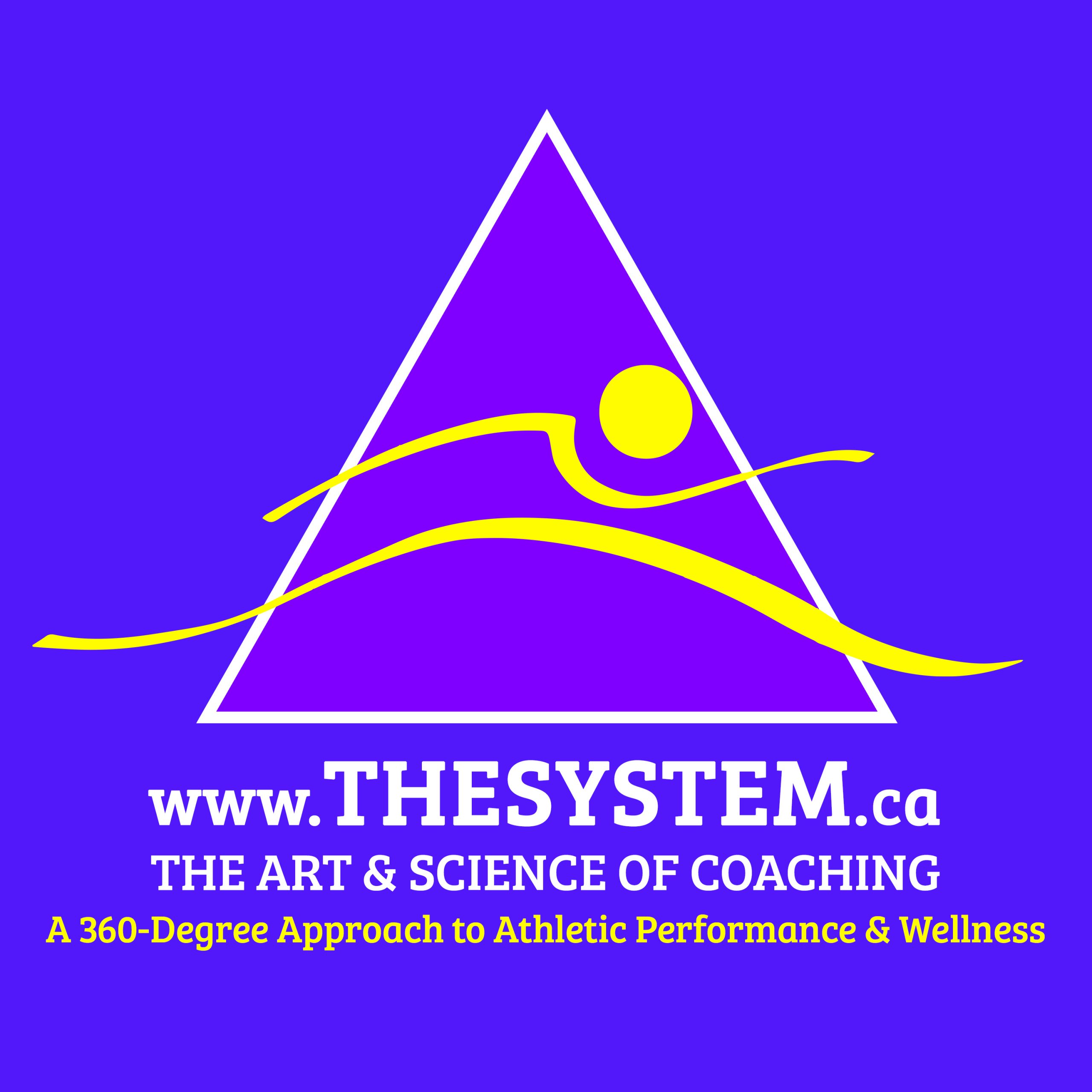
The System vs. Other Conditioning Companies
Athlete A was able to squat close to 800lbs for 1RM and has a useable force (i.e. the average force that can produced at any given time) of 70% or 560lbs. Athlete A can produce this force, in about 1.5 sec.
Athlete B squat can squat the same, but can produce a useable force (i.e. 560lbs) in about 1.1 sec.
The question is, which Athlete is better suited for the rigors of athletic competition? If you responded with Athlete B, you are correct, and here’s why:
What do you work on first or do you work on two things concurrently? – As a conditioning coach, do you learn to identify and correct weaknesses in an athlete (i.e. regeneration, flexibility, mobility, strength, elasticity & precision neuromuscular conditioning) or do you build on the athletes’ strengths? The answer is, there is fine overlap between the two perspectives. At The System we definitely identify weaknesses, but at the same time we continue to work on the strengths. This is done in such a way that the weaknesses eventually take care of themselves via an indirect approach in conditioning and regenerative methodology.
“Given the opportunity, the body always moves towards efficiency (i.e. performing the same amount of work, in the shortest period of time with the least bit of energy expended) & better health”
Most conditioning programs create a disconnect between the Central Nervous System and soft-tissue of all types (i.e. visceral organs, ligaments, tendons, muscle, bone, nerves, lymphatic fluid, heart and lungs). The internet is all too saturated with athletes pounding out big weights or jumping on high boxes, only to obtain “gold medals” in the conditioning arena but very little performance on the field, not to mention the increased injury potential associated with their chosen method(s) of conditioning. All in all, these methods can potentially complicate and/or worsen an already fragile Nervous System.
The body always tries to recruit other parts of the whole in order to facilitate more efficient movement, this is to say, muscles co-operate with one another (i.e. intra- & inter-muscular co-ordination). The pattern of recruitment largely depends upon sensory perception a.k.a. Proprioception, and underlying tension patterns. Conditioning, or developing strength, for the sake of developing strength, will definitely make an athlete ‘stronger’. Unfortunately, this will not translate into better performance unless that strength is integrated, or developed proportionately to their overall speed and tendon elasticity.
Minute tissue restrictions, if present globally, can negate high performance and increase injury potential via the improper recruitment of muscle patterning. Minute nervous system and soft-tissue adjustments are made after inadequate rehab of soft-tissue injuries. Overtime, the body ‘builds’ around this dysfunction, as a protective method, to accommodate such tissue distortion, most of which is at a sub-sensory level until improper loading or counterproductive training methods (i.e. ‘the right exercise at the wrong time’) are presented to the body, and now it is again ‘forced’ to adapt to the new conditioning stimulus. Recognizing these old tissue distortions and counterproductive movement patterns is vital to an integrated approach to conditioning. This is why The System ensures that proper conditioning and regeneration are positively addressing this faulty recruitment, thus circumventing old injuries, decreasing injury potential, and ultimately resulting in better performance with less effort in the shortest period of time.
Today’s training programs are both intentionally and unintentionally misguiding most athletes – “Doing the Right Exercises at the Wrong time”. Perhaps our current infatuation with the body comes from what the ancient Greeks emphasized as a well developed proportioned body, hence the phrase “anima sana in corpore sano” which translates as “in sound mind, in sound body”. The evidence for this was in their statues, pottery and mosaics from 530BC to 400BC. Modern man has ‘bastardized’ this vision, to the point of focusing far more on aesthetics, and not enough on function in the arena of sport.
At the elite level, the fascial system, which is intimately tied to the Central Nervous System, processes a vast amount of outside stimuli from a network of proprioceptive areas in the body (eyes, ears, skin, feet, jaw alignment). This information is relayed back to the various soft-tissues in the musculoskeletal system (i.e. ligaments, tendons, joints and muscles) amongst others, to co-ordinate an appropriate response. This is by in large how movement is obtained, and has been like this since man was on this planet. Early man a.k.a. Palaeolithic Man, spent much of his time hunting and gathering, common sense would tell us that he was much more active than his later counter parts – modern man. He also was barefoot, jumped, sprinted for his prey or had to do so to evade becoming quarry, lifted heavy objects, threw a spear, climbed a tree, crawled – often under duress and under unstable conditions. Thus, in order to maintain survival, he would have developed a superior proprioceptive system, as well as the structure (i.e. dense connective tissue), that was able to re-act favourably during unfamiliar settings. Modern man is the counter entices of this, he spends much of his time not having to hunt nor gather food, nor even run for a bus. Much of our lives have been relegated to technological advancements. We drive more than we walk. There is very little need during a course of a day, let alone during a week, for us to even sprint. Our sedentary lives have made us proprioceptively dead. Thus limiting our ability to access a higher degree of physical intelligence, that was once a natural part of survival for Palaeolithic Man. The question remains: “How do we obtain even a fraction of this physical reality, without having to live like a caveman?” The reality is that we have:
Over 300,000 certified trainers following the ideas & concepts found in over 50,000 books on training & diet. We buy over 3 billion dollars worth of sporting goods. We join over 20,000 gyms to spend over 5 billion hours working out, wearing athletic clothing and shoes that cost well-over 13 billion dollars each year. Yet we are less fit and more over weight than we were 100 years ago. Let us not confuse living longer with longevity. The former refers to just having a long life, with the absence of quality, where as the latter refers to a life well lived – Quality.
“We may know more about fitness, but yet we are less fit”
The problem is how we define fitness. If at 40 years of age you could still participate in the sports you once played when you were in your teens, you are still “FIT”. However, if you are relegated to “darts” at your local pub…I beg to differ with your “FITNESS”. The same applies to athletic conditioning. Much of the athletic conditioning world focuses on exercise as an end in itself, rather than viewing exercise as a means to an end. In other words, use exercise as a tool to achieve better performance and not ‘medals in the weight room’. Most of what we at The System have seen does not address the design of the human body. We have spent the last decade or so heavily influenced by both the body building & powerlifting realms, only to adopt another extreme – Olympic lifting, hoping to see it translate into better performance. Yet all we, at The System, have seen is more injuries sustained either from inappropriate conditioning methodology and/or from the sport itself. People in general gravitate to the extremes, but rarely come back to the middle. Staying at the periphery too long will stifle growth. The greatest growth comes from the middle. Therefore, conditioning programs that focus one training element at the exclusion of others or spend far too much time in one area, will not reap great results.
“The extremes define the middle. One can not stay at the extremes too long at the expense of the other extreme. This will only diminish the middle. The middle ground is where the greatest growth occurs”


